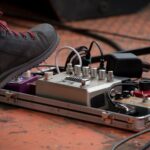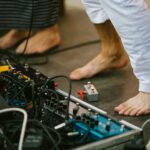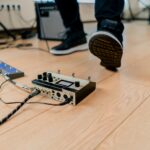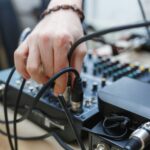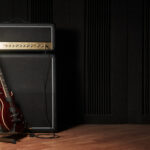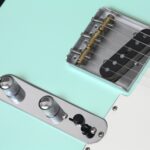Delay and reverb are two of the most commonly used effects in music production. They are often used together to create depth, space, and texture in a mix.
But the question is: should you put delay before or after reverb? The answer is not straightforward, and it ultimately depends on what you are trying to achieve with your mix.
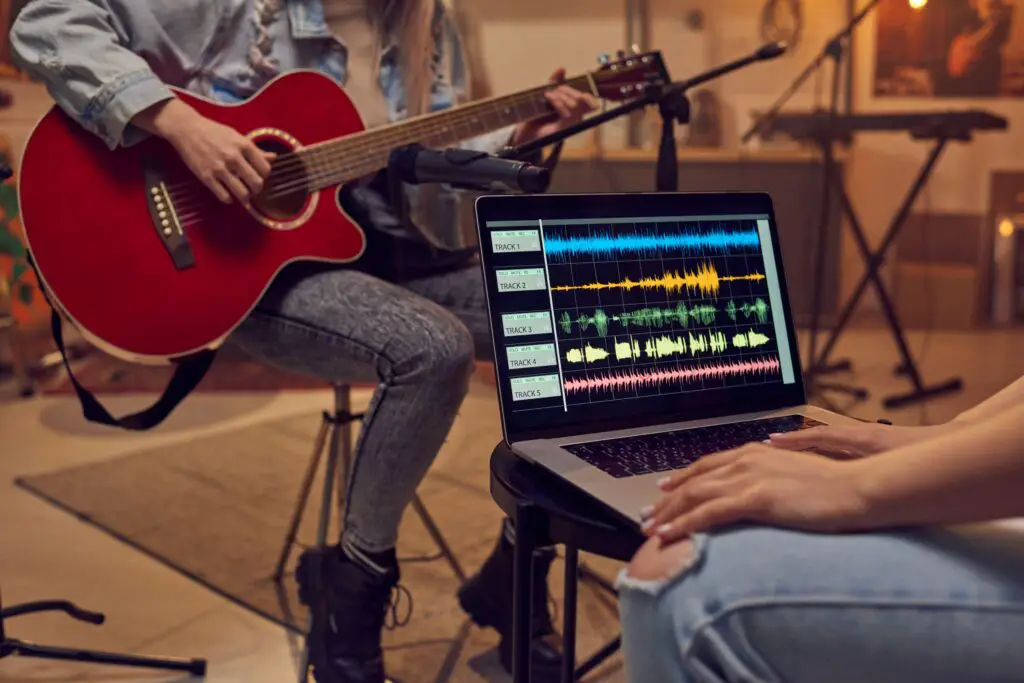
Understanding delay and reverb is essential to determine their optimal placement in a signal chain. Delay is an effect that repeats the original sound with a certain time delay. It can create a sense of space, add rhythmic interest, and enhance the overall sound.
Reverb, on the other hand, simulates the sound of a room or a space and adds depth and dimension to the sound. It can create a sense of distance, add a natural decay, and blend the different elements of a mix.
Signal chain placement is critical when it comes to delay and reverb. Placing delay before reverb can result in a more pronounced and defined delay effect, while placing reverb before delay can result in a more ambient and diffuse sound.
The optimal placement depends on the desired effect and the specific mix. Technical aspects of delay and reverb, such as feedback, decay, and mix, can also affect their placement and interaction.
Check out these other posts:
Key Takeaways on Delay Before or After Reverb?
- The optimal placement of delay and reverb in a signal chain depends on the desired effect and the specific mix.
- Understanding the technical aspects of delay and reverb, such as feedback, decay, and mix, is essential to determine their optimal placement.
- Placing delay before reverb can result in a more pronounced and defined delay effect, while placing reverb before delay can result in a more ambient and diffuse sound.
Check out these other related posts:
Understanding Delay and Reverb
The Basics of Time-Based Effects
Time-based effects are an essential part of creating a rich and dynamic sound. Two of the most popular time-based effects are reverb and delay. Both effects add depth and character to a sound, but they do so in different ways.
Delay is an effect that repeats a sound after a set amount of time. This creates an echo-like effect that can be used to add a sense of space and dimension to a sound.
The amount of time between each repeat, known as the delay time, can be adjusted to create different effects. Short delay times create a slap-back effect, while longer delay times create a more pronounced echo.
Reverb, on the other hand, simulates the sound of a space by adding a series of echoes to a sound. The decay time, or the length of time it takes for the echoes to fade out, can also be adjusted to create different effects. Short decay times create a tight, focused sound, while longer decay times create a more spacious sound.
Difference Between Reverb and Delay
While both reverb and delay are time-based effects, they have distinct differences. Reverb creates a sense of space by simulating the sound of a room, while delay creates a sense of space by repeating a sound.
Reverb is often used to create a sense of depth and realism in a mix. It can be used to make a sound feel like it was recorded in a specific space, such as a concert hall or a small room. Reverb can also be used to create a sense of cohesion between different elements in a mix.
Delay, on the other hand, is often used to create a rhythmic effect or to add interest to a sound. It can be used to create a sense of movement or to emphasize certain elements in a mix.
When deciding whether to use delay or reverb, it’s important to consider the overall sound you’re trying to create. If you want to create a sense of space and depth, reverb may be the way to go. If you want to create a rhythmic effect or emphasize certain elements, delay may be the better choice.
Signal Chain Placement
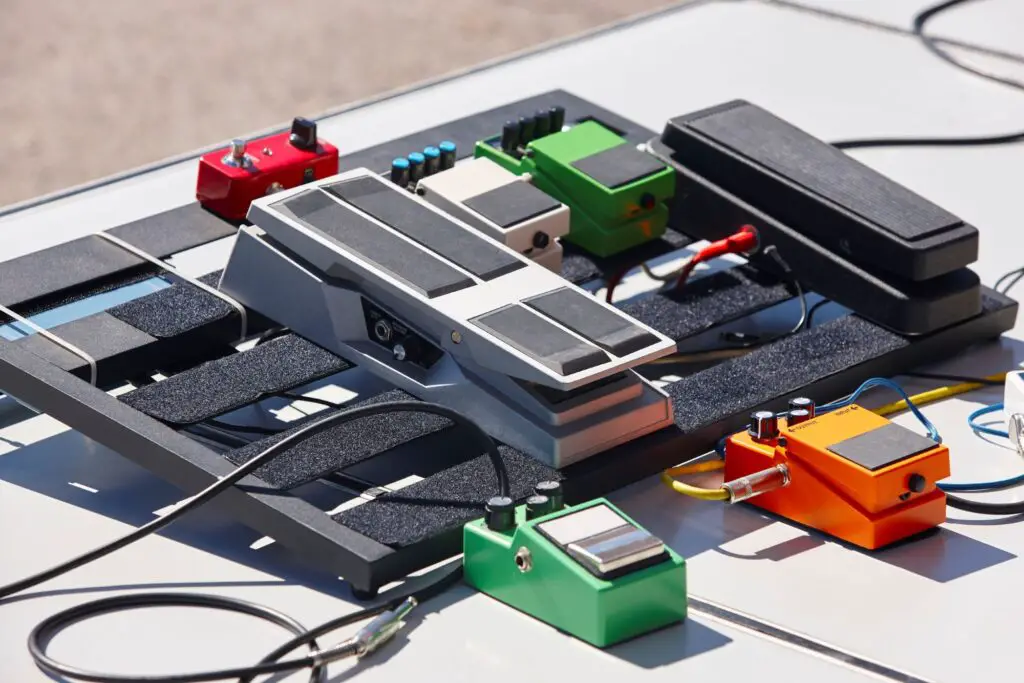
When it comes to setting up a pedalboard, the order in which pedals are placed can greatly affect the overall sound. The order in which delay and reverb pedals are placed in the signal chain is a topic of much discussion among guitarists.
Delay Pedals in the Chain
Delay pedals are commonly placed at the beginning of the signal chain, before any other effects. This is because delay pedals work by repeating the original signal, and if other effects are placed before the delay, they will also be repeated, potentially causing a muddy or cluttered sound.
However, some guitarists prefer to place delay pedals after other effects, such as overdrive or distortion pedals, to create a more saturated and complex sound. In this case, it is important to experiment with the order of pedals to find the desired sound.
Reverb Pedals in the Chain
Reverb pedals are commonly placed at the end of the signal chain, after all other effects. This is because reverb adds space and depth to the sound, and placing it at the end of the chain allows it to affect the entire sound.
However, some guitarists prefer to place reverb pedals before other effects, such as delay or distortion pedals, to create a more ambient sound. In this case, it is important to experiment with the order of pedals to find the desired sound.
Overall, the placement of delay and reverb pedals in the signal chain is a matter of personal preference and experimentation. It is important to consider the desired sound and the interaction between pedals when setting up a pedalboard.
Technical Aspects of Delay and Reverb
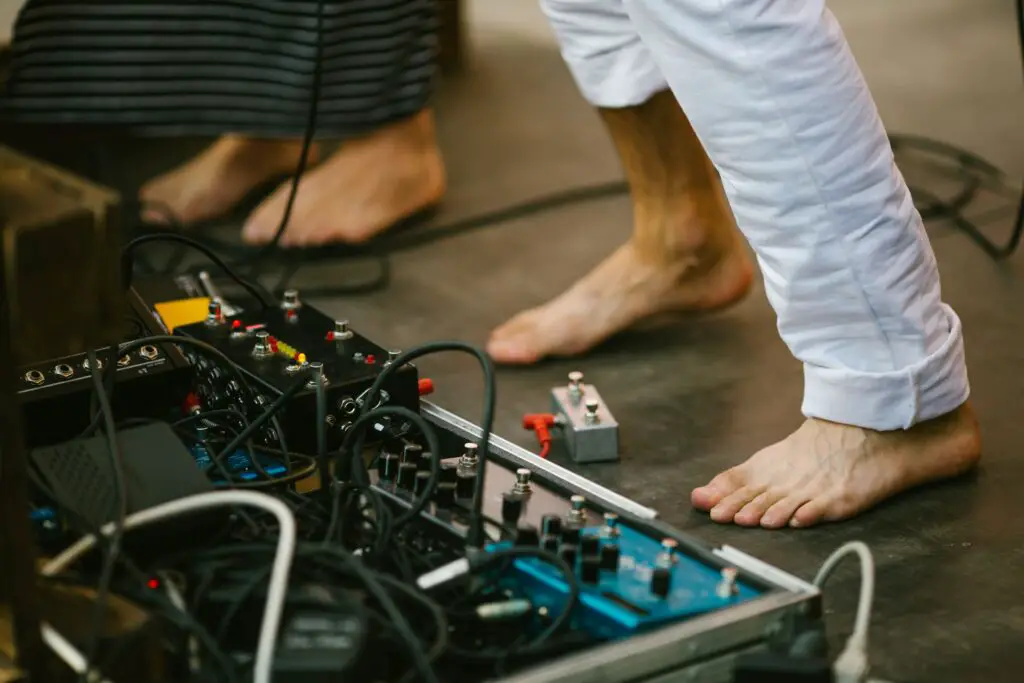
When it comes to using delay and reverb effects in a guitar signal chain, there are a few technical aspects to consider. Adjusting the delay time and feedback can have a significant impact on the overall sound, as can the reverb time and early reflections.
Adjusting Delay Time and Feedback
Delay time refers to the length of time between the original guitar sound and the repeated sound. By adjusting the delay time, you can create a range of effects, from subtle echoes to pronounced repeats. Longer delay times can create a more spacious, atmospheric sound, while shorter delay times can add depth and dimension to the guitar sound.
Feedback refers to the number of times the delay repeats. By adjusting the feedback, you can create a range of effects, from a single repeat to an infinite loop. Higher feedback settings can create a more intense, chaotic sound, while lower feedback settings can add subtle texture to the guitar sound.
Reverb Time and Early Reflections
Reverb time refers to the length of time it takes for the sound to decay. By adjusting the reverb time, you can create a range of effects, from a short, snappy reverb to a long, sustained reverb. Longer reverb times can create a more spacious, atmospheric sound, while shorter reverb times can add depth and dimension to the guitar sound.
Early reflections refer to the first reflections of sound that bounce off surfaces in a room. By adjusting the early reflections, you can create a range of effects, from a tight, focused sound to a more diffuse, ambient sound.
Higher early reflection settings can create a more spacious, atmospheric sound, while lower early reflection settings can add subtle texture to the guitar sound.
Tonal Shaping with EQ and Dynamics
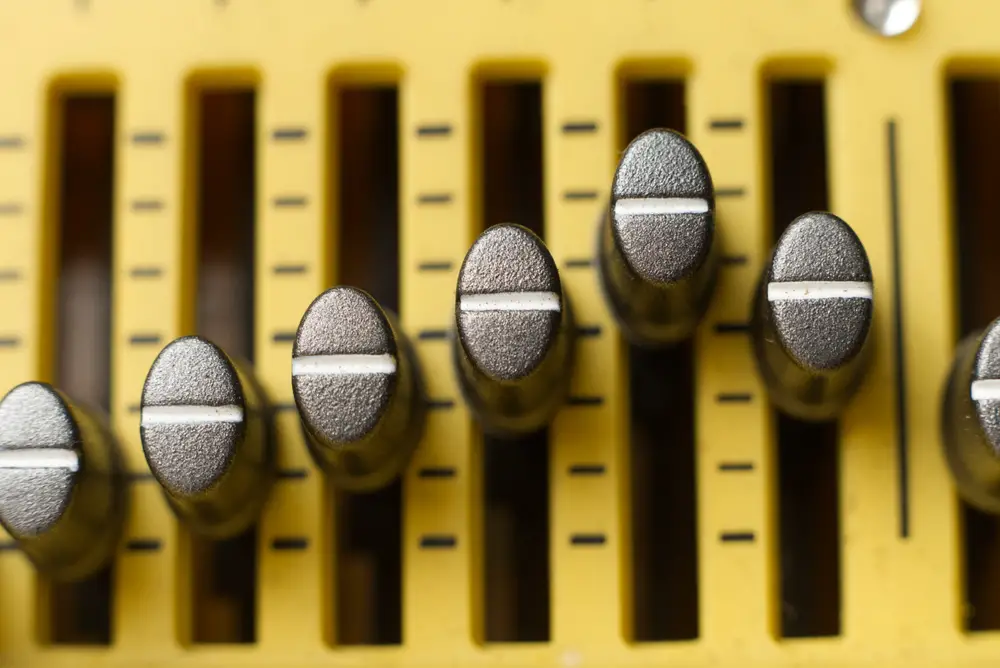
When it comes to creating a cohesive and polished mix, tonal shaping is crucial. EQ and dynamics are two powerful tools that can help you achieve the desired clarity and balance in your mix.
In this section, I will discuss how to use EQ and dynamics to shape your mix, and how to apply these techniques when using delay before or after reverb.
EQ Settings for Clarity
EQ is a powerful tool for shaping the tonal balance of your mix. When using delay before or after reverb, EQ can help you achieve clarity and separation between the two effects.
To achieve clarity, you can use EQ to remove any frequencies that are causing muddiness or masking other elements in the mix. For example, if the reverb is masking the lead vocal, you can use EQ to cut the frequencies that are clashing with the vocal.
On the other hand, if the delay is too prominent and overpowering, you can use EQ to cut the frequencies that are making it too dominant.
When using EQ, it’s important to be subtle and precise. Small adjustments can make a big difference in the overall tonal balance of your mix. Use a narrow Q setting to target specific frequencies, and make small cuts or boosts to achieve the desired effect.
Dynamics and Volume Control
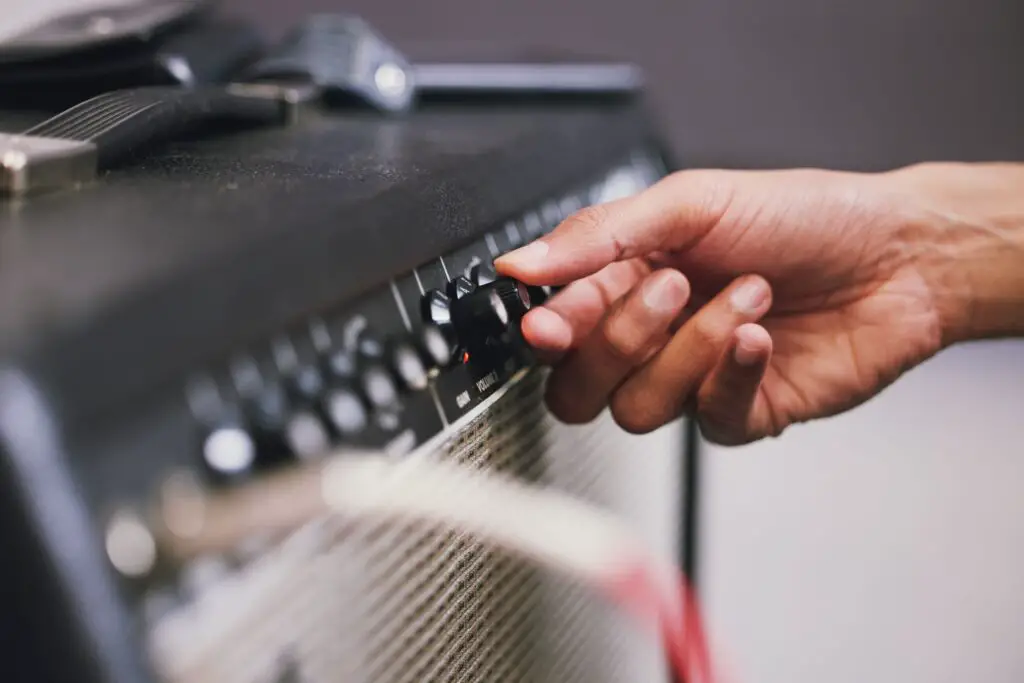
Dynamics and volume control are essential for achieving a balanced and polished mix. When using delay before or after reverb, dynamics can help you control the overall volume and impact of the effects.
Compression is a powerful tool for controlling the dynamics of your mix. When using delay before or after reverb, you can use compression to even out the volume of the effects and prevent them from overpowering other elements in the mix.
For example, if the delay is too loud and is masking the other instruments, you can use compression to bring down the volume of the delay and make it more subtle.
Volume pedals and dynamic pedals are also useful for controlling the overall volume of your mix. These pedals allow you to make subtle adjustments to the volume of the effects, and can help you achieve a more balanced and polished mix.
Tonal shaping with EQ and dynamics is crucial for achieving a cohesive and polished mix. When using delay before or after reverb, EQ can help you achieve clarity and separation between the two effects, while dynamics can help you control the overall volume and impact of the effects.
Use these tools wisely and make subtle adjustments to achieve the desired effect.
Advanced Techniques and Effects
Creative Use of Modulation
When it comes to using delay and reverb effects, modulation can be a powerful tool to add movement and depth to your sound. Modulation effects such as chorus, tremolo, flanger, and phaser can be used before or after delay and reverb to create unique soundscapes.
For example, placing a chorus pedal before your delay and reverb can add a lush, swirling effect to your sound. On the other hand, placing a phaser after your delay and reverb can create a subtle, pulsing effect that adds movement to your sound.
It’s important to experiment with different modulation effects and pedal placements to find the right combination for your sound. Whether you prefer the warm, vintage sound of analog modulation or the precise, digital sound of modern pedals, there are endless possibilities for creative expression.
Incorporating Other Effects
In addition to modulation effects, there are many other effects that can be used in conjunction with delay and reverb to create unique sounds. For example, a tape delay pedal can add warmth and character to your sound, while a digital delay pedal can provide precise, crystal-clear repeats.
Other effects such as distortion, overdrive, and fuzz can be used to add grit and texture to your sound, while compression can be used to even out your tone and add sustain. It’s important to experiment with different effects and pedal placements to find the right combination for your sound.
Frequently Asked Questions
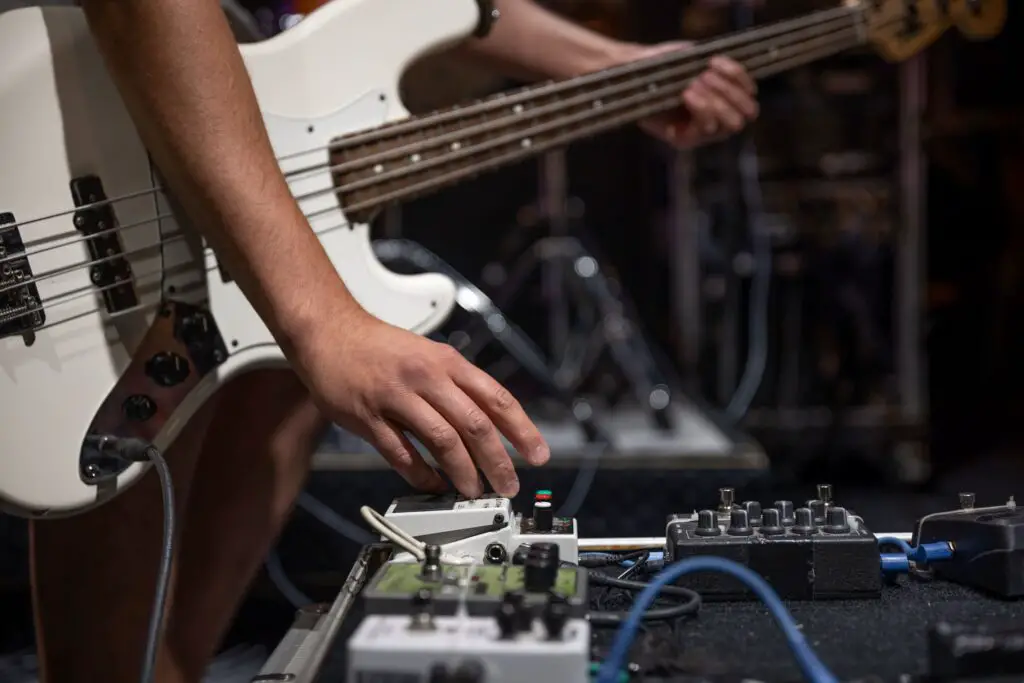
Should delay be placed before or after reverb when setting up a pedal chain?
The order of delay and reverb in a pedal chain is a matter of personal preference. Some guitarists prefer to place delay before reverb, while others prefer the opposite.
Placing delay before reverb allows the repeats to be more pronounced and prominent, while placing reverb before delay creates a more ambient and washier sound. Experiment with both orders to see which one works best for you.
How does the order of delay and reverb affect vocal recordings?
The order of delay and reverb can have a significant impact on vocal recordings. Placing delay before reverb can make the vocals sound more spacious and ethereal, while placing reverb before delay can make the vocals sound more cohesive and integrated.
Experiment with both orders to see which one works best for your vocal recording.
What are the sonic differences between reverb into delay and delay into reverb?
Placing reverb into delay creates a more ambient and washy sound, while placing delay into reverb creates a more pronounced and prominent sound. The difference in sound is due to the way the two effects interact with each other. Experiment with both orders to see which one works best for your sound.
Is it better to put delay before or after distortion for guitar?
The order of delay and distortion in a guitar pedal chain depends on the type of sound you want to achieve.
Placing delay before distortion creates a more pronounced and prominent delay effect, while placing distortion before delay creates a more subtle and integrated delay effect. Experiment with both orders to see which one works best for your guitar sound.
Where should a tremolo pedal be placed in relation to delay and reverb?
The placement of a tremolo pedal in relation to delay and reverb in a pedal chain is a matter of personal preference. Some guitarists prefer to place tremolo before delay and reverb, while others prefer to place it after.
Placing tremolo before delay and reverb allows the tremolo effect to be more pronounced and prominent, while placing it after creates a more ambient and washy sound. Experiment with both orders to see which one works best for your sound.
How does chorus pedal placement interact with delay and reverb in the signal chain?
The placement of a chorus pedal in relation to delay and reverb in a pedal chain can have a significant impact on the overall sound.
Placing chorus before delay and reverb creates a more pronounced and prominent chorus effect, while placing it after creates a more subtle and integrated effect. Experiment with both orders to see which one works best for your sound.

My name is Howard Matthews and I have been playing the guitar since I was knee-high. My parents like to joke that I was pulling the strings even before I was born. In fact, one of my earliest memories is sitting on the couch with my dad’s guitar, wreaking havoc on the chords.
Now, 40 years later, I can attest that I play them much better than I did back then. I have followed in the footsteps of both my parents – much to their delight – and have been the main guitarist in my band for the best part of three decades.
Music has always been my passion, and until recently my life has been so consumed with it that I haven’t had a moment to have a breath (and I wouldn’t have it any other way)!

